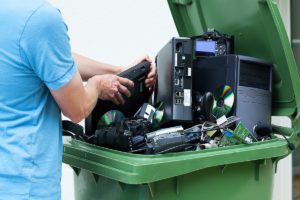Relays are switching elements that open or close circuits electronically. They control the operation of a circuit by manipulating contacts in an electrical circuit. When relay contacts are given an electrical current, the contacts will experience a change of state.
Relays are commonly used components for cooking equipment, heating elements, starting coils, circuit boards, and audible alarms. Their application often extends to wider ranges of commercial and industrial use.
Relay Switch Circuit
Relay switching applications are normally limited to smaller currents in an electrical circuit. They are not often used for controlling the state of power consuming devices. Conventional relay contacts may experience difficulties with high-current switches because of contact erosion from constant cycling. However, mercury relays may be used as contactors for high-current switches because of the use of mercury as a switching element. Some types of mercury relay devices include mercury-wetted relays and mercury switches. This type of relay contains liquid mercury and works through the displacement of a magnetic slug of steel with mercury.
Electromechanical and Solid State Relays
Electrical relays can be classified as electromechanical or solid state.
Magnetic force controls the opening and closing of contacts in electromechanical relays. On the other hand, switching is completely electronic with solid state relays. The inclusion of either relay depends on considerations of the electrical requirements, cost constraints, and life expectancy of the equipment. Heavy-duty equipment normally requires the need for an electromechanical relay system. In contrast, non-moving electronics are more suited to a solid state relay switch.
 Solid State Relays (SSR)
Solid State Relays (SSR)
An SSR uses semiconductor transistors as its switching device. Less voltage is necessary for an SSR because it does not require direct contact or the need to energize a coil. They involve a quicker switching operation because there are no moveable physical parts. Without contacts and moving parts, SSR components pose no risk of wearing out. Any defect or damage will require the complete replacement of a relay.
Electromechanical Relays (EMR)
Unlike SSRs, the individual contacts of an EMR can be replaced when any component becomes defective. It involves a more cost-effective measure for repair. An EMR also provides a cleaner switching process with reduced contact resistance. This means there is no residual electrical resistance or leakage whenever switches are opened or closed. There are large distances between contacts and this space acts as an insulation to eliminate these minor problems.
The relay coils involved with an EMR are also highly inductive. Its inductance value is initially low and increases as the electric current reaches a steady-state level. However, SSRs have resistive inputs and a constant input current.
An EMR is inexpensive, easy to use, and requires lower power than SSR. However, it is also a mechanical device that allows for a relatively slow switching speed or response time. Likely, these moving parts will fail over time and affect connected electronic circuits.
Both EMRs and SSRs are general-purpose relays commonly used as part of the control circuits of industrial, commercial, and consumer equipment. The different functions and advantages of each relay type means application is flexible and can suit many functions.







